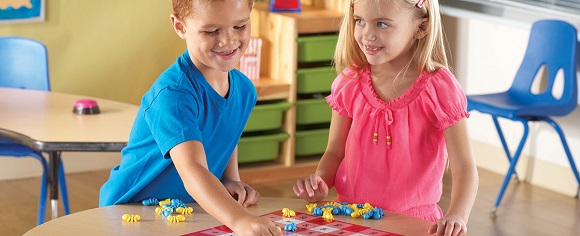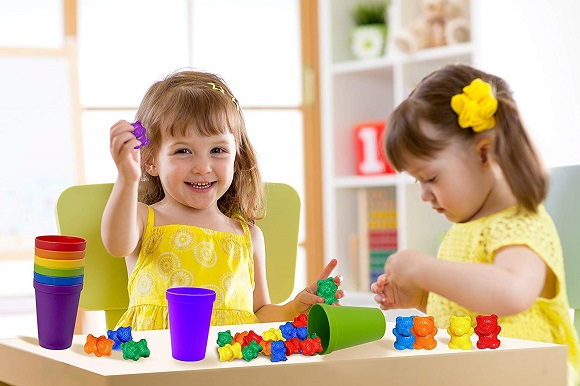Nowadays, you can probably find a ton of technological toys being promoted as educational toys useful for children’s development. And while that may be true, research shows that actually, traditional toys are still far more effective at helping kids learn a language and mathematical skills. But since we live in a technological age and our children are surrounded by technology, there’s no way to really avoid it. And the truth of the matter is – we shouldn’t. But that doesn’t mean that we should also completely replace the proven traditional teaching methods, like using educational maths toys or language puzzles.
According to various studies, children spend about an hour or two every day watching television or playing on an iPad and laptop, spending far less time playing with conventional toys. And while certain electronic toys offer great benefits and can teach valuable educational skills in an engaging and stimulating way, electronic toys (especially those with access to the internet), can have detrimental effects on your kid’s development, communication, and problem-solving skills. Playing with educational maths toys, for instance, is shown to especially pique their interest in mathematics. Traditional educational maths toys can focus on representing, relating and operating on numbers and describing spaces and shapes, which are some of the most important areas for laying strong foundations in mathematics.
On the other hand, language and literacy toys can help children acquire language. Learning a language is much different than learning mathematics, obviously, and it can be done through listening and active conversation. As time goes on, kids start picking up about body language and interpretation. Language and literacy toys can help teach your child the alphabet, sharpen their communication skills, spelling, phonics, storytelling capabilities, etc. Undoubtedly, electronic toys and the internet are also a great source for learning languages. In fact, in my opinion, learning through the internet maybe even better in some cases, as long as the focus during the time spent on the iPad or laptop is spent for that specific purpose – learning. Still, using electronic toys still minimizes the opportunity for you to interact with your child, which is seen as a huge downside.

Some of the most popular traditional toys to help with language and mathematical development are books, building blocks, puzzle games, and board games. Books obviously encourage interaction between you and your children, and you can find a wide range of interesting, age-appropriate books that you can read to your children and ask questions about. Building blocks are great for developing coordination and motor skills, as well as starting conversations and teaching shapes and sizes. That being said, these toys are great for developing both mathematical and language skills at the same time. Board games also require some kind of interaction, oftentimes in a quiz-style fashion. Besides encouraging communication, it teaches valuable social skills and cues, such as listening to instructions, taking turns, and most importantly – that they can’t always win. The ability to take a loss gracefully and try harder, as a result, can be a valuable lifelong lesson.
However, keep in mind that toys alone aren’t enough to help develop language and mathematical skills. You need to actively encourage development by talking, asking questions and opinions and reading – basically stimulating your child whenever possible. As adults, we already have enough problems and things to think about on a daily basis. If you’re working with people all day, it can become easy to forget to talk to your child. However, even making small conversations about whatever can help them learn valuable communication skills. You can prompt them to talk by asking open-ended questions that require a response. For instance, you can ask whether they want to wear a red or blue shirt, or would they like an apple or a banana. When they make an active effort to talk, praise them and repeat their words to encourage a meaningful 2-way conversation.
Also just reading to them, and asking them what they think about what you read to them exposes your child to speak, as well as language. You don’t even need any special books to read, you can read road signs, packages, cereal boxes. Exposure is key to helping your child not only learn but also understand language. You can introduce new vocabulary on a daily basis before bedtime, or prompt conversation by asking questions about what’s happening in the story you’re reading. This can also encourage your child to look at reading as an enjoyable activity instead of a chore.
Basically, there are countless different ways you can engage with your child and help them develop cognitive skills. Ideally, you want to combine both the traditional and technological approaches, but in my opinion, the traditional approach using puzzles, mathematical toys, books, board games, etc. should be the predominant one.
